
- •Quiz
- •Quick Quiz 1 A block of mass m is projected across a horizontal
- •Course of lectures «Contemporary Physics: Part1»
- •Periodic motion is motion of an object that regularly repeats—the object returns to
- •A special kindof periodic motion occurs in mechanical systems when the force acting
- •Motion of an Object
- •Motion of an Object
- •Mathematical Representation
- •Mathematical Representation
- •Mathematical Representation
- •Mathematical Representation
- •Mathematical Representation
- •Mathematical Representation of Simple Harmonic Motion
- •Mathematical Representation of Simple Harmonic Motion
- •Mathematical Representation
- •Mathematical Representation
- •Energy of the Simple
- •Graphical representation ofsimple harmonic motion. (a) Position versus time. (b) Velocity
- •The Pendulum
- •The Pendulum
- •The Pendulum
- •Home work
- •Damped Oscillations
- •Damped Oscillations
- •Forced Oscillations
- •Forced Oscillations
- •Forced Oscillations
- •Energy of the Simple
- •Propagation of a Disturbance
- •Propagation of a Disturbance
- •Propagation of a Disturbance
- •Quick Quiz 4.1 Suppose you are standing directly behind someone who steps back
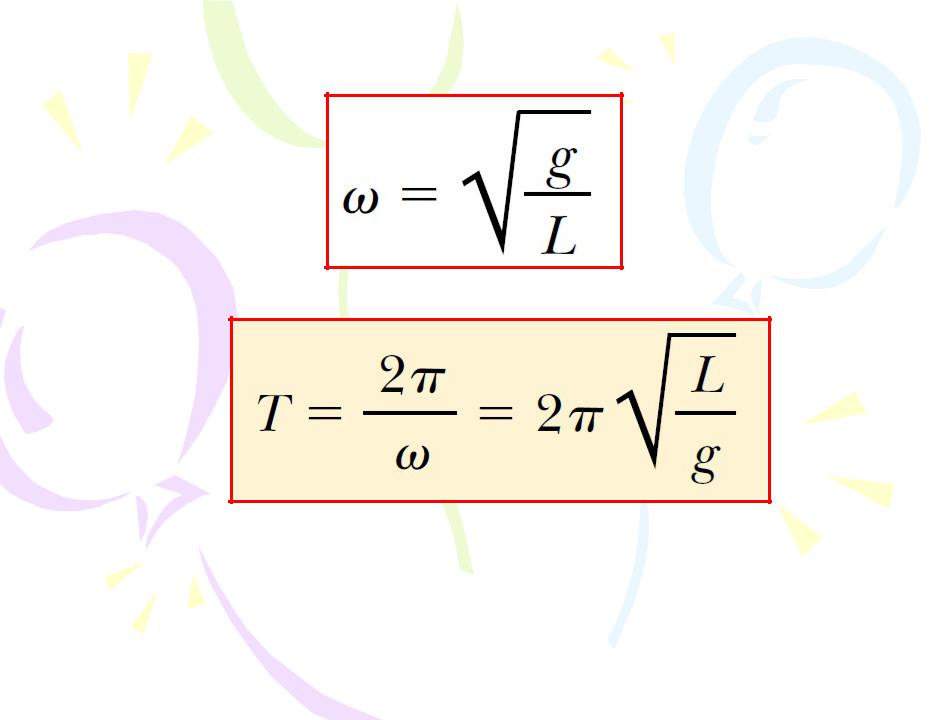
 The Pendulum
The Pendulum
(4.48)
(4.49)
In other words, the period and frequency of a simple pendulum depend only on the length of the string and the acceleration due to gravity.

Home work

Physical Pendulum
Torsional Pendulum
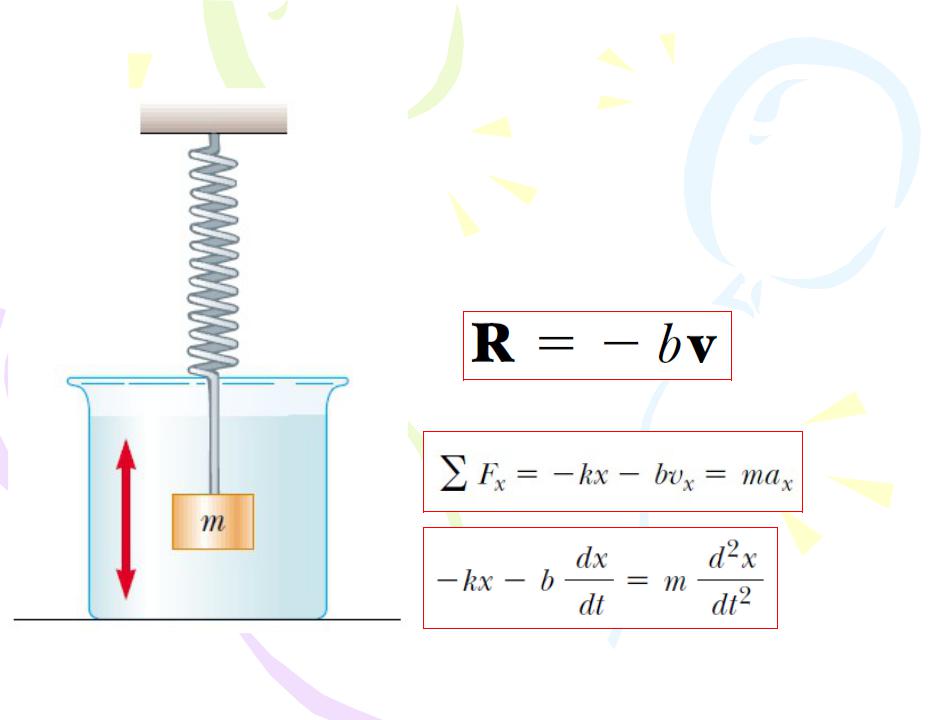
Damped Oscillations
In many real systems, nonconservative forces, such as friction, retard the motion. Consequently, the mechanical energy of the system diminishes in time, and the motion is said to be damped.
as friction, retard the motion. Consequently, the mechanical energy of the system diminishes in time, and the motion is said to be damped.
where b is a constant called the damping coefficient.
(4.50)
Figure 4.18 One example of a damped oscillator is an object attached to a spring and submersed in a viscous liquid.
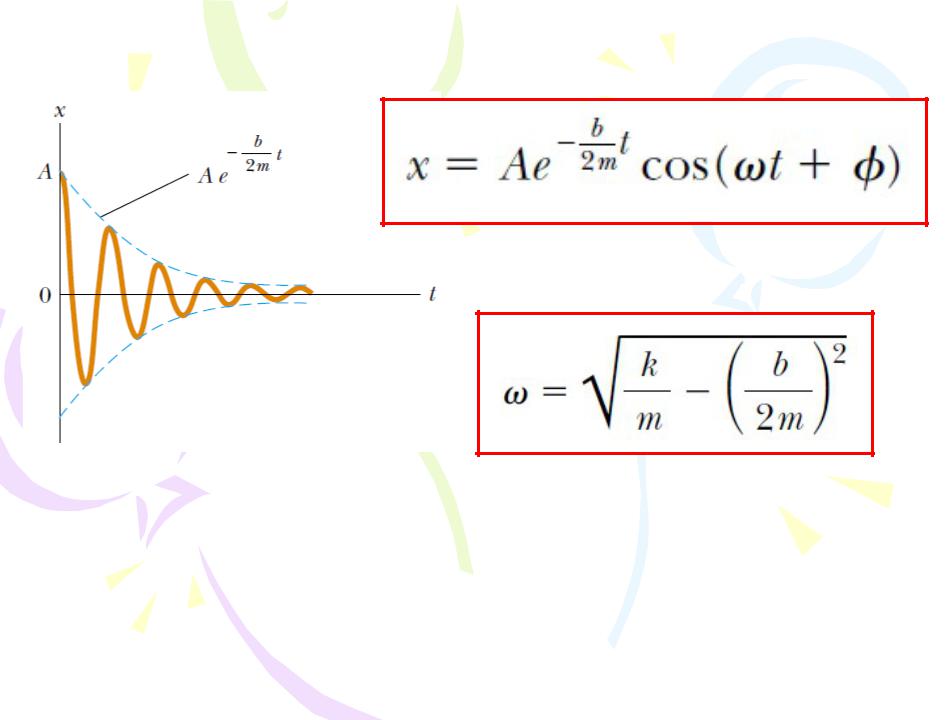
Damped Oscillations
Graph of position versus time for a damped Oscillator.
(4.51)
(4.52)
When the retarding force is small, the oscillatory character of the motion is preserved but the amplitude decreases in time, with the result that the motion ultimately ceases.
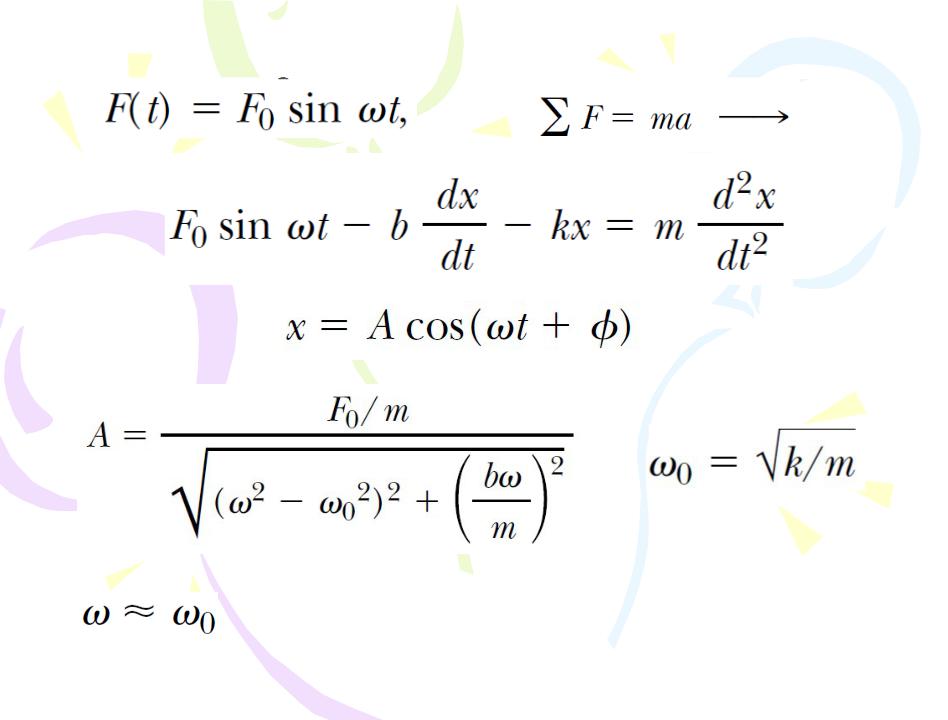
Forced Oscillations
At resonance the applied force is resonance in phase with the velocity and the
power transferred to the oscillator is a maximum.
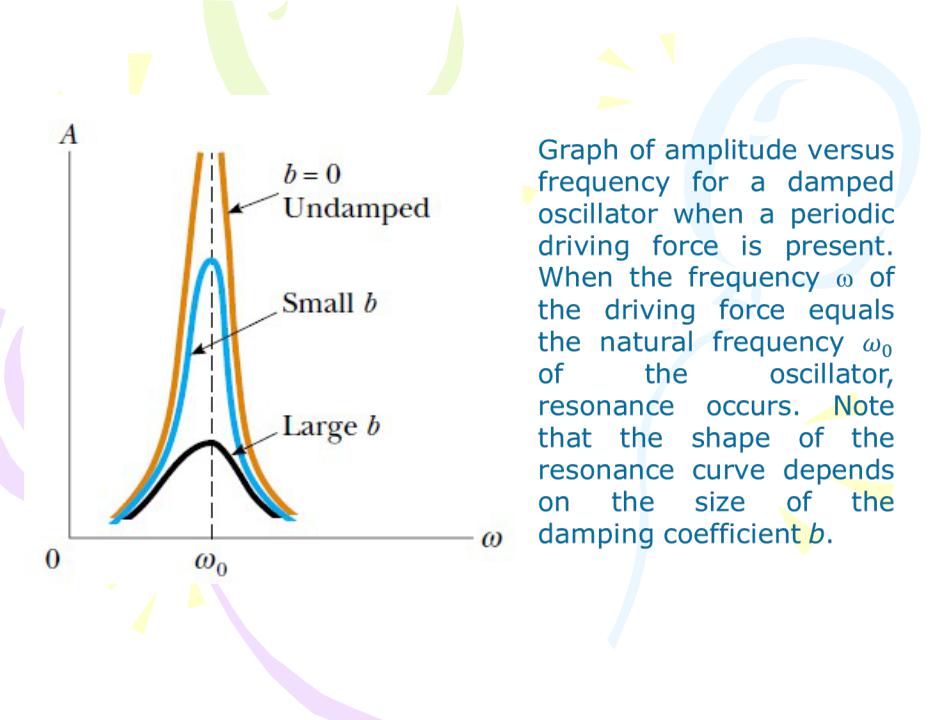
Forced Oscillations
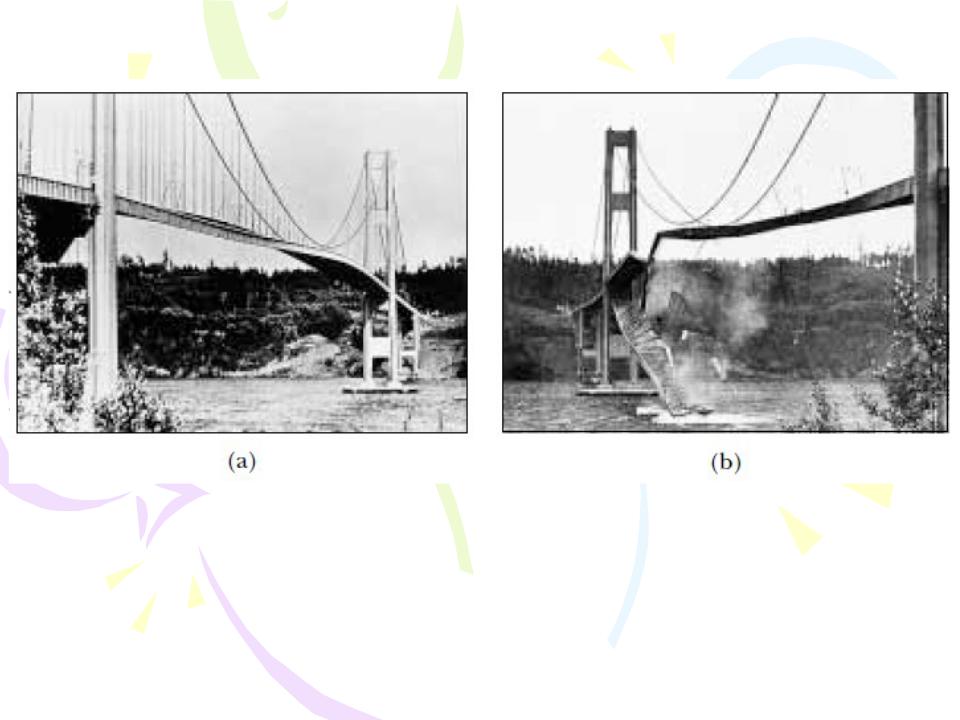
Forced Oscillations
(a)In 1940 turbulent winds set up torsional vibrations in the Tacoma Narrows Bridge, causing it to oscillate at a frequency near one of the natural frequencies of the bridge structure.
(b)Once established, this resonance condition led to the bridge’s collapse.
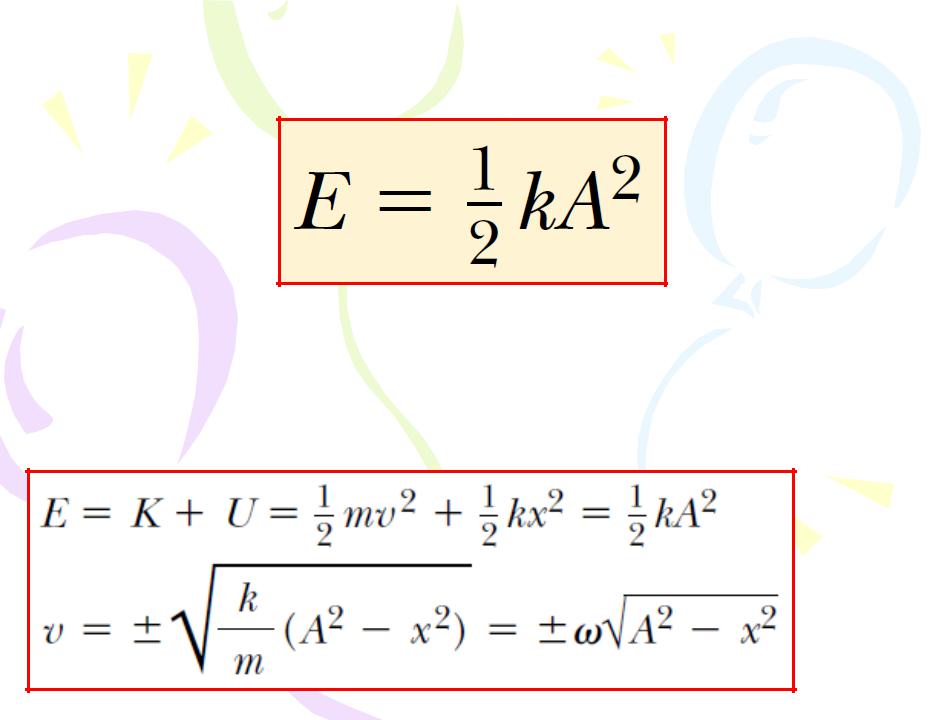
Energy of the Simple
Harmonic Oscillator
(4.53)
That is, the total mechanical energy of a simple harmonic oscillator is a constant of the motion and is proportional to the square of the amplitude. 
(4.54)
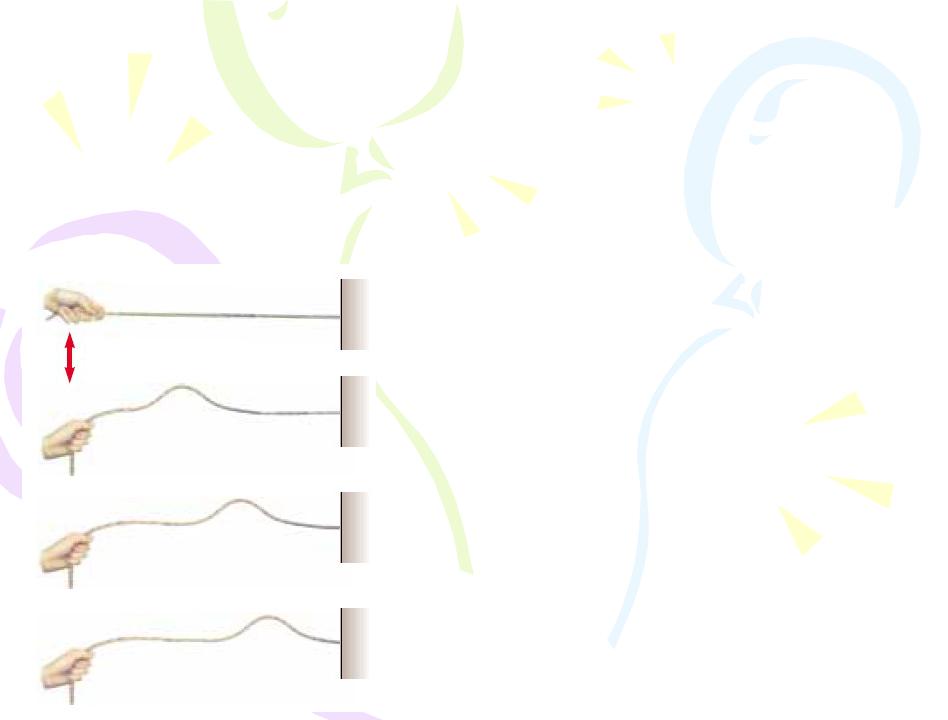
Propagation of a Disturbance
All mechanical waves require
(1)some source of disturbance,  (2)a medium that can be disturbed, and
(2)a medium that can be disturbed, and
(3)some physical mechanism through which elements of the medium can influence each other. 
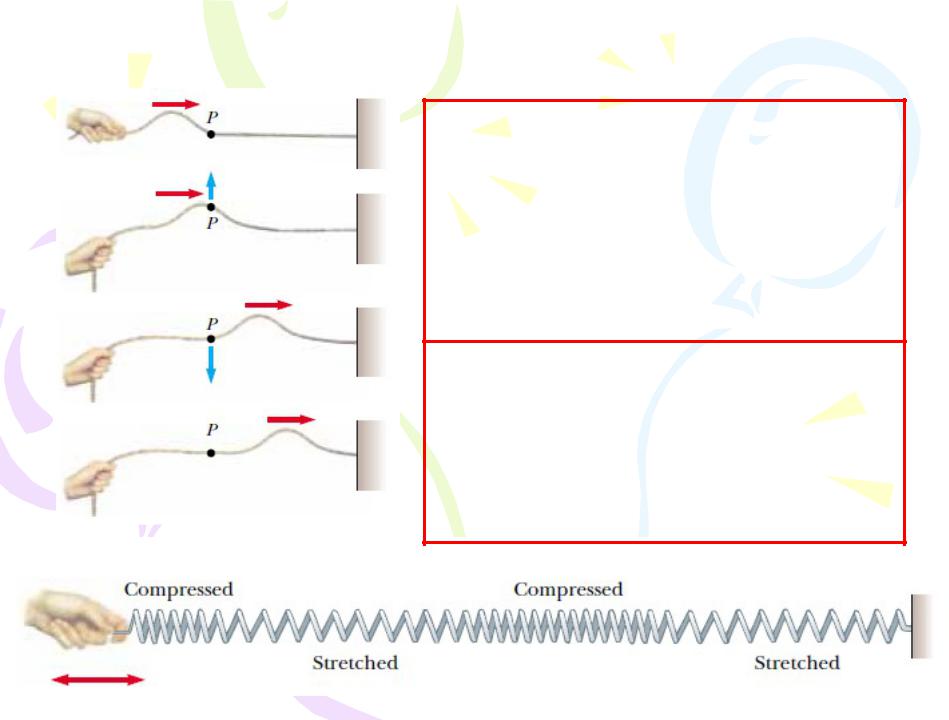
Propagation of a Disturbance
A traveling wave or pulse that causes the elements of the disturbed medium to move perpendicular to the direction of propagation is called a transverse wave.
A traveling wave or pulse that causes the elements of the medium to move parallel to the direction of propagation is called a longitudinal wave. 
